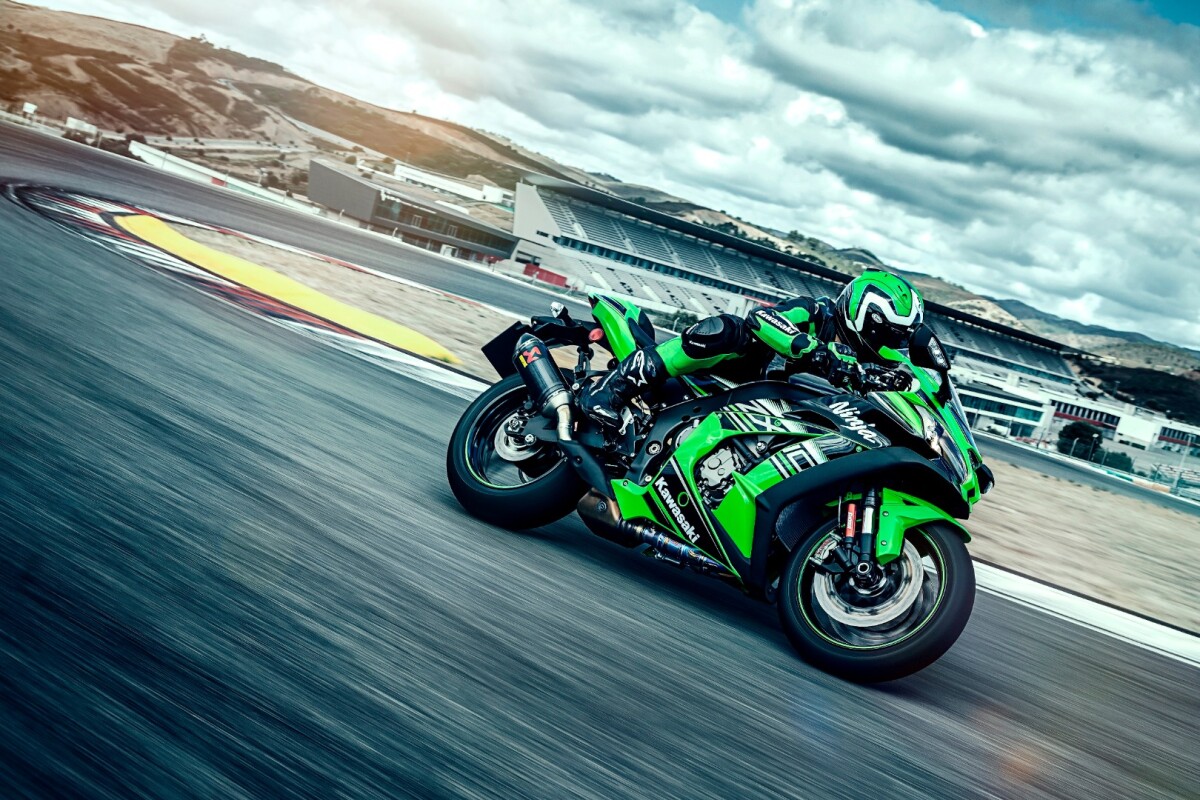As promised a month ago, Kawasaki has unveiled its new liter superbike. Developed with the input of Kawasaki Racing Team’s two World Superbike champions, the 2016 Ninja ZX-10Rpacks an impressive arsenal of race-derived equipment.
Kawasaki has been upfront about the path it planned to take with its new superbike. With the World Superbike Championship’s (WSBK) governing body continuously tightening the noose around the modifications racing teams are allowed to make on their motorcycles, constructors were expected to load their production models with the equipment they needed in order to win. That’s exactly what Kawasaki has done, making this fact the centerpiece of its promotional campaign with the #getcloser hashtag, underlining how much the new model is similar to the actual superbike racer.
The new ZX-10R starts by violating the first rule of marketing – it looks almost identical to its predecessor. Yet under those familiar fairings lies a brand new motorcycle that shares little more than the name and cylinder dimensions with the previous model.

The 998 cc four cylinder in-line engine is in theory based on the powerplant that was introduced in 2011, but Kawasaki’s development team made sure that every inch has been redesigned or replaced: new pistons, camshafts, cylinder head and primary gear, lighter crankshaft, redesigned porting with electronic throttle valves, 25 percent bigger airbox, thicker engine sidewalls. There’s some clever and practical engineering involved, such as the brand new cassette-type transmission that is placed relatively high in the engine so as to allow for its removal without having to drain the oil.
All these changes have been designed for extreme power and less inertia – the racer’s dream. The result is an output of 210 hp (154.4 kW) at 13,000 rpm (measured with the RAM Air effect) and a peak torque of 113.5 Nm (83.7 lb-ft) at 11,500 rpm. Although the maximum output is more or less the same as that of the previous model, its peak values are produced higher in the rev scale with stronger mid-range torque – and it complies with the stricter Euro 4 emissions norms.
The engine features adjustable ignition mapping, with three available options for the rider – Full, Middle and Low. All 210 ponnies are available with the Full map, while the Low will only allow for 60 percent of them. The Middle map though is very interesting, as it offers the Low power output as long as the rider uses up to 50 percent of the throttle, turning to Full power should he wind up the throttle any further.

Even more impressive is the electronics package tasked with handling all this power. A brand new Bosch Inertia Measurement Unit (IMU) takes into account six degrees of freedom – what is usually called six-axis IMU – five of which are measured by a multitude of sensors with the sixth calculated by the system’s proprietary software. This is the same kind of system that Yamaha uses on its latest R1.
The IMU uses this information to organize a series of rider-adjustable control systems varying from the typical traction control (KTRC) and launch control (KLCM) to engine braking (KEBC). Kawasaki has also introduced an intelligent braking system (KIBS) that links the ABS control unit with the engine’s electronic control. This monitors front and rear wheel speed, front brake caliper hydraulic pressure, throttle position, engine speed, clutch actuation and gear position to determine the ideal front brake hydraulic pressure. According to Kawasaki this is the first time such an integrated braking system has been applied to a production motorcycle.
There’s also the innovative Cornering Management function, a system designed to assist riders to stay on their intended line through the corner by automatically coordinating the traction control and the braking system. The KIBS and Cornering Management will be available only in the models equipped with the optional ABS.

The frame has undergone an overhaul, too. The geometry has been revised by seating the rider closer to the steering head and elongating the swingarm. The rider will be able to adjust the headstock angle and the swingarm pivot to his personal riding style. The target is better corner entry stability as the front will be loaded with more weight, with the whole effect being assisted by the reduced inertia from the engine due to the fact that most of its rotating parts are lighter.
Kawasaki continues to innovate with the ZX-10R’s suspension, introducing Showa’s latest kit on the 2016 model. The Balance Free Fork (BFF) and Rear Cushion (BFRC) have been developed in MotoGP and WSBK throughout 2014 and feature a new design that promises to eliminate pressure balance fluctuations. Given that Showa is a company partly owned by Honda, it is surprising that its new top suspension system once again debuts on Kawasaki’s superbike – just like in 2009, when the ZX-10R became the first to feature Showa’s Big Piston Fork, before it was adopted by both Honda and Suzuki.
In the USA, the 2016 ZX-10R ABS will be priced at $15,999. The KRT Edition, which means different graphics, cost an extra $300.
Thefollowing video features the new Ninja in action with Kawasaki Racing Team’sWSBK factory riders, Jonathan Rea (2015 World Champion) and Tom Sykes (2013 World Champion).
Source: Kawasaki








